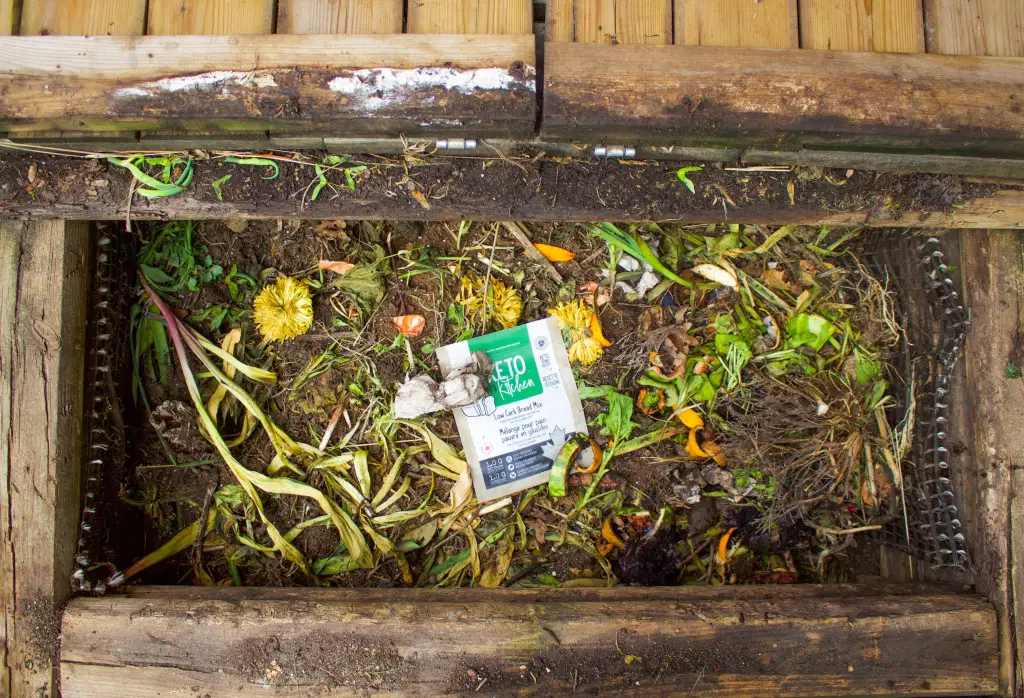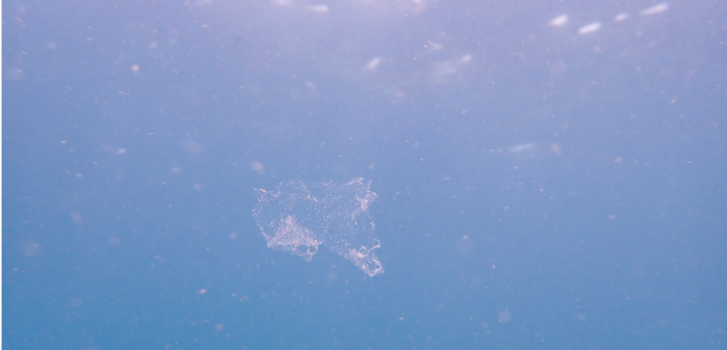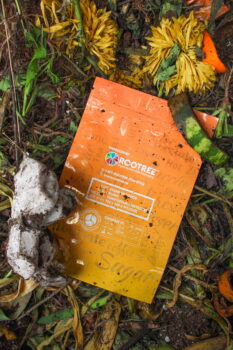Have questions about our compostable packaging? We have your answers! We understand that this is a tricky subject to navigate and that you’ll have many questions about what you’re signing up for before your jump head-first into the world of compostable packaging.

Compostable
Many pouches on the market are made entirely from petroleum-based plastics with enzyme additives to accelerate degradation – but this just means that they break down into tiny little pieces of plastic. The materials we use are fully compostable! This means our packages won’t break down into microplastics, and the material will safely compost back into the earth without leaving harmful residues behind.
Right in your backyard! Our films and inks are certified for home composting and our zippers and valves are certified for industrial composting! To compost at home, cut off the zipper and valve (if applicable) and dispose of them separately.
The main difference between home and industrial composting is the conditions the compost is in. At home, where the compost is often left outside, the temperatures fluctuate from season to season. The industrial composting process is much more controlled - by adding heat, oxygen, microbes, and other materials to aid in the process, a product that may take 8-12+ months to decompose at home, may take less than 6 months at an industrial composting facility. Check out the Standards for Compostability EN 13432 for more information on composting.
For the time being, our packages cannot be placed in your green bin. Sound confusing? Don’t we know it! Our compostable packaging is compostable, but it’s so good that even the composting experts can’t differentiate it from regular plastics at first glance. This means it gets sorted out of the compost and sent to the landfill. On top of that, municipal facilities simply aren’t designed to accommodate items that need a little bit more time to break down. For now, you'll have to continue composting it at home or bring it to a private facility that accepts compostable packaging for industrial composting. With hope on the horizon, recent legislative activity shows promise for the future of compostable packaging thanks to the implementation of standard practices across the industry.

… we can’t wait to share, but for now, it remains a mystery.
Essentially, nothing fully breaks down in a landfill, even organic matter, because landfills are inherently lacking the right environment for degradation - that's why we see that landfills are eventually capped and the land cannot continue to be reused as a landfill. But the good news is that the compostable materials won't be leeching harmful chemicals like plastics do during that time, it won't turn into a microplastic and pollute our waters, and since the compostable packaging is made from renewable resources and sustainable forestry initiatives, it has a much cleaner pre-lifecycle footprint than plastics do.
To learn more about the composting process, read more: Composting Guide For Geniuses Like You

The compostable packaging we've developed can decompose at home in ~8-12 months! If brought to an industrial composting facility, our compostable packaging can take 6 months or less to decompose! Our compostable films are verified by a third party for disposal in home or industrial composting facilities.

Our compostable packaging is made with clear film that is printed using HP Indigo Digital Technology. The process involved is a sustainable way to print exceptional-quality packaging. All the inks are certified for use with compostable packaging.
We offer our home compostable film using either a matte or gloss finish which are derived from Certified Wood Pulp Cellulose. This way you don't have to compromise on your packaging when you choose compostable.
Yes, our compostable packaging maintains the freshness of your product as conventional packaging would. However, due to the natural material base, compostable packaging itself does have a shorter lifespan than conventional packaging (in our defence, forever is a tough one to beat!). Our packaging is best suited for shelf-stable foods and has the potential to remain shelf-stable for up to 2 years under controlled conditions. It’s important to remember that packaging made from natural materials may behave differently when in contact with other products. We always recommend that clients order some samples and test their products inside of these bags over a controlled period of time to determine suitability. As always, a chat with our Sales team to discuss your specific product needs can answer all of your burning questions.
Terminology in the sustainable industry can be very confusing. While many companies use the term “biodegradable”, it is a catch-all term and does not have the same meaning as “compostable”.
The term “biodegradable” refers to a material's ability to break down into smaller micro pieces in nature but does not mean that it will turn into a natural product. Bioplastic is considered biodegradable, but while it can degrade in the environment, it remains a plastic and won't turn into a natural material.
Often, the term “biodegradable” is used to embellish the green profile of the product and create the belief that the item is made from organic matter, and therefore is compostable. This is not the case. The term “compostable” refers to the material's ability to fully return to the earth and cause no harm to the environment. Thumbs down to green washing.
When conventional plastic breaks down, it becomes microplastics which often can only be seen under a microscope(although they can be as large as 5mm). Just because it's difficult to see the microplastic, doesn't mean it's not there! Microplastics end up in our water streams, oceans, potable water, and are even ingested by marine animals. Unlike most waste pollution, microplastics are nearly impossible to clean up. Recent studies show that humans ingest thousands of microplastics a year through the dust in the air, plastic packaging, drinking water, and food consumption. For more information on microplastics, see PAC's resource
Excellent question. Compostable packaging will not diminish the colour of the inks on your packaging! Our inks that are certified for use in home compostable packaging will continue to be vibrant and colourful!
Yes! This versatile clear film allows for “windows” to be created in your artwork to showcase your product. However, due to the natural components of these films, the windows will have diminished clarity.
Often customers ask us if they can make claims like “100% Compostable” or “Fully Biodegradable” on their packaging – in short, no (at least not yet!). We are committed to being transparent about the proper disposal of our products, and we don’t want to mislead anyone along the way. That’s why we’ve created a compostable logo that we require to be placed in a visible location on every package. We are currently in the process of pursuing 3rd party certification and upon obtaining certification, we will be able to provide access to a globally recognized logo that customers can benefit from on their packaging.